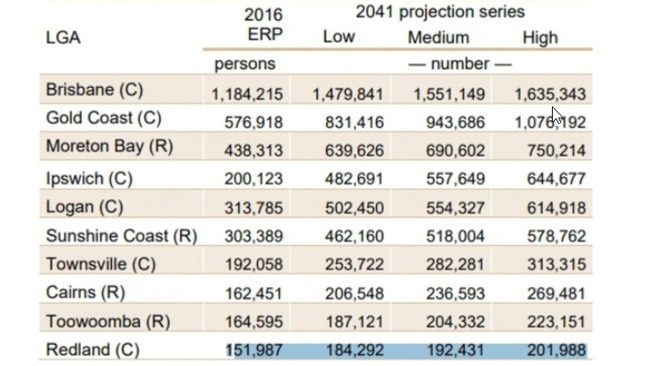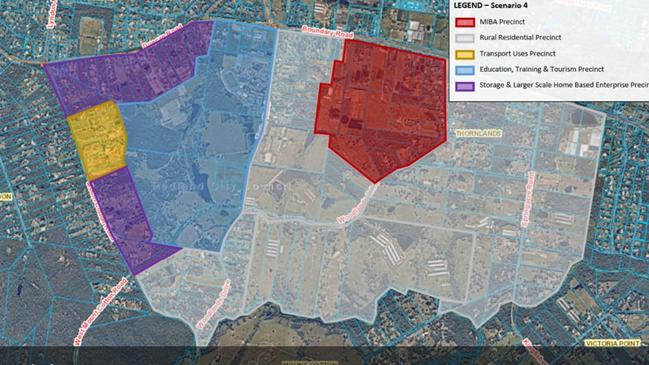100 houses a year: Fiteni Homes denies land banking claims despite state call for 11K extra dwellings
A well-known South East Queensland developer has denied land banking, following claims from angry local property owners that it is stifling their plans for more housing subdivisions and has “locked up” land.
Redlands Coast
Don't miss out on the headlines from Redlands Coast. Followed categories will be added to My News.
A prominent Redland City developer has denied it was withholding the release of housing land until building costs dropped and land prices rose.
Fiteni Homes said it was building 100 new houses a year in line with state government requirements for Redland to provide an extra 11,000 by 2041.
The company, which is a partner in the massive 3000-lot Shoreline estate, has built more than 150 homes at Redland Bay’s The Crossing and is doing earthworks at Victoria Point for a further 800 houses.
Angry local property owners said the developer was stifling their plans for more housing subdivisions and had “locked up” land even after a damning state government report on the city’s housing supply last year.
The state’s Shaping SEQ report singled out Redland for only having 2.6 years’ worth of housing land instead of 15 years of supply.
The figures were adjusted last year with the city now required to build an extra 11,171 dwellings over the next 19 years, after previous estimates were for an extra 17,200.

A Fiteni spokesman said the company maintained a steady “build and land release program” to provide greater certainty to subcontractors and suppliers in good times and bad.
“We provide certainty to our buyers that their investment is protected and as a consequence we do not release land for sale to other builders within our estates,” the spokesman said.
“We are proud of the relationships we have built with subcontractors and suppliers over 45 years — a hallmark of this is our consistency of construction.”

Land owner Mike O’Brien said Redland’s housing land shortage would only worsen as rising building costs were coupled with poor planning of estates currently being built.
“There is land for housing at Shoreline but that development has some issues including no sewerage treatment plant yet and possibly not one for a couple more years,” he said.
“There is one major developer in the area who owns most of the approved land and is not releasing it and at the same time, the council is rejecting opening up other areas (such as Thornlands).
“There are a lot of landowners in this area who have been jerked around for many years unlike some developers.”
In 2019, the then State Development minister Cameron Dick ordered Redland council to contact Thornlands landowners, hold a forum and write a report on development options for the area.

Aggrieved Thornlands landowners said the citywide consultation watered down their voice and resulted in proposals to keep the area’s rural zoning, ensuring the land could never be developed.
A spokesman for the state government planning department said this week, it was working with the council and industry to address housing affordability and lack of rental vacancies and had given a $15 million loan to the Shoreline developer to build the necessary sewerage plant.
The southern Redland Bay area, expected to be home to more than 10,000 people living in 5000 homes, does not have its own sewerage treatment plant with initial plans based on trucking the faeces 11km to Victoria Point.
State planning minister Steven Miles stepped in last year and approved a $30 million waste water treatment plant to be built on wetlands that drain into the Logan River on Beenleigh-Redland Bay Rd which flooded in February.
“We are focusing on understanding where housing is most needed and planning to meet that need,” the department spokesman said.
“Southern Redland Bay (land release) has been supported by the state to accelerate land supply in the southeast.
“The ministerial approval and the funding assistance, will ensure that this essential piece of urban infrastructure is delivered in time to support the staged rollout of land and housing.”
The department said flood modelling provided by Shoreline showed it would create additional flood capacity (storage) within the site during a one-in-100-year flood event.
The plant would also include a risk management system to mitigate potential impacts to human health during periods of system failure or severe wet weather events.





